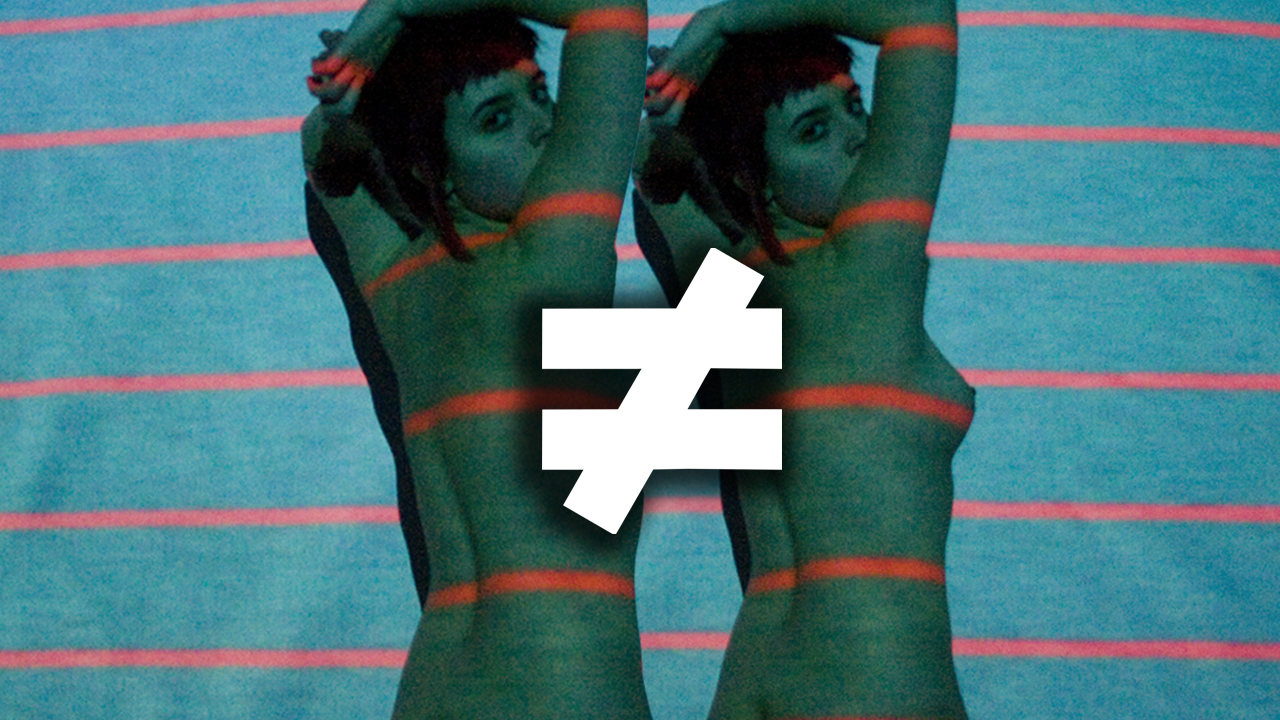Yesterday, it took ANIMAL 0.672 seconds to identify Molly Soda, aka the “anonymous” artist whose nudes, self-portraits and snap-shots were going to be displayed in a small Chicago gallery on February 8th without her consent or knowledge. Soda threw them out in a plastic bag years ago when relocating to Detroit. A stranger found them and somehow, they made it into the hands of Paul-David Young. He curated a selection of her trash into “To Perform, To Conceal” — his upcoming exhibit of so-called “found photos.”
 “I have no idea who this guy is,” Molly Soda told ANIMAL yesterday, more amused and flattered than creeped out. “Sort of baffled that they couldn’t figure out it was me considering most of those photos are already on the Internet.” The Chicago Reader since responded with a corrective follow-up, and after I made a few calls to the Lincoln Square Presbyterian Church which provides the exhibit space and pays the curator, Paul-David Young responded to my questions.
“I have no idea who this guy is,” Molly Soda told ANIMAL yesterday, more amused and flattered than creeped out. “Sort of baffled that they couldn’t figure out it was me considering most of those photos are already on the Internet.” The Chicago Reader since responded with a corrective follow-up, and after I made a few calls to the Lincoln Square Presbyterian Church which provides the exhibit space and pays the curator, Paul-David Young responded to my questions.
“I found her Molly Soda Tumblr page, related social media and something on RollingStone.com,” Young wrote me. He knew the identity of his “anonymous” artist after all, and despite her internet presence being prevalent enough to be in something on RollingStone.com describing her a “millennial” phenomena, despite her public CV and email contacts, he did not contact her himself and he does not cite her name. As he told the Chicago Reader, “For me, to mention her name is/was only a distraction.”

(Image: MollySoda.Tumblr.com)
Not a distraction: One provocative lead photo (three other photos were added much later), a thoroughly strained comparison to the topical Vivian Maier (which would have only worked if Molly Soda was either actually anonymous or dead) and some patronizing criticism of the young woman’s trash as if it was an actual body of work given to him to review at how “well taken” they were, “formerly speaking.”
Young tells ANIMAL that he is “probably not” going to update any of the press materials or revise his upcoming talk at the Church’s gallery space. “I’m still not convinced it’s necessary,” he says, then takes to updating definitions of English adjectives. “Crediting them as anonymous is different than unknown, which is to say unknowable.” And so, he seems to believe that labeling “knowable” someone’s images as anonymous/courtesy of yourself — the equivalent of cropping out a photo credit a scrawling out a painting signature and toting it as your anonymous discovery — is legit curatorial practice, in fact, it’s even conceptual-like!
“I recognize a philosophical juncture that once they were in the trash, ownership ceased,” he muses to me. Soda mused on this as well, finding it curious that Young’s self-imposed ownership to her physical stuff mimics the part of internet culture where images sometimes lose authorship once unloaded onto the internet, quipping, “It’s interesting that this is happening IRL too.” Young jumped all over that, of course. “That includes attribution, and so by Molly’s own words… there is no imperative to cite ownership or attribution to her. This is not the same as if I had printed out images online and used them.” Only, it is. Because those images he used are online, in the Google image results for her name.
When asked if he was surprised that it took less than an hour for his faux-“anonymous” artist’s identity to become a public fact, Young said, “Not really, I knew she was pretty well-known on the internet.”

Molly Soda on view at Phillips Auction House. (Photo: ANIMAL New York)
I’ve written about Molly Soda before, whose self-documented persona had graduated from YouTube and Tumblr fame into the major leagues last year, with an approving nod from Rhizome. Even though her video was one of the first digital artworks to be sold at the Lindsay Howard–curated Phillips Auction (“No knowledge of those other things,” Young says.) I didn’t expect others to instantly recognize her face and assumed that Paul-David Young simply did a very bad job finding out the identity of this “anonymous” girl, that he didn’t even run a basic reverse-image search leading to the Flickr page of Amalia Soto, whose Tumblr identifies her alter-ego-turned-digital-artist-monicker Molly Soda. No, he just considered her identity “a distraction” from his curatorial fantasy of a found art exhibit.

This is not a discussion of Molly Soda’s work or of appropriation art practices. This not a sex scandal. But there is something creepy and personally dismissive in falsifying a narrative and forcing anonymity and some fantasy of mystique on a known person, for the sake of rather shallow inquiry — “How do photographs participate in this world of stuff being lost and found?”
That will be one of the topics of discussion at Young’s February 8 talk about artist Molly Soda’s old photos anonymous schoolgirl’s found work and the ethics self-imposed importance merits of his curating decisions.
“I do not think of these as Molly Soda’s photographs,” Young says.
The reality — that a breakthrough internet kid’s rejected old art stuff is in the accidental possession of a fantasizing fan-man, years later, at a time when the male post-gaze/attempt-intellectualism of young girls’ on the internet is so disgustingly trendy — is far more interesting. It would make for a great discussion.
But alas, reality is “distracting.”
(Top image: Amalia “Molly Soda” Soto)


